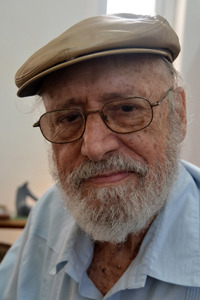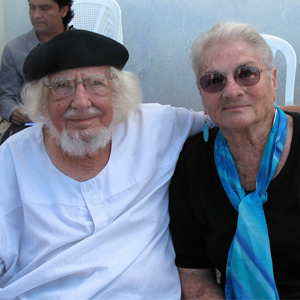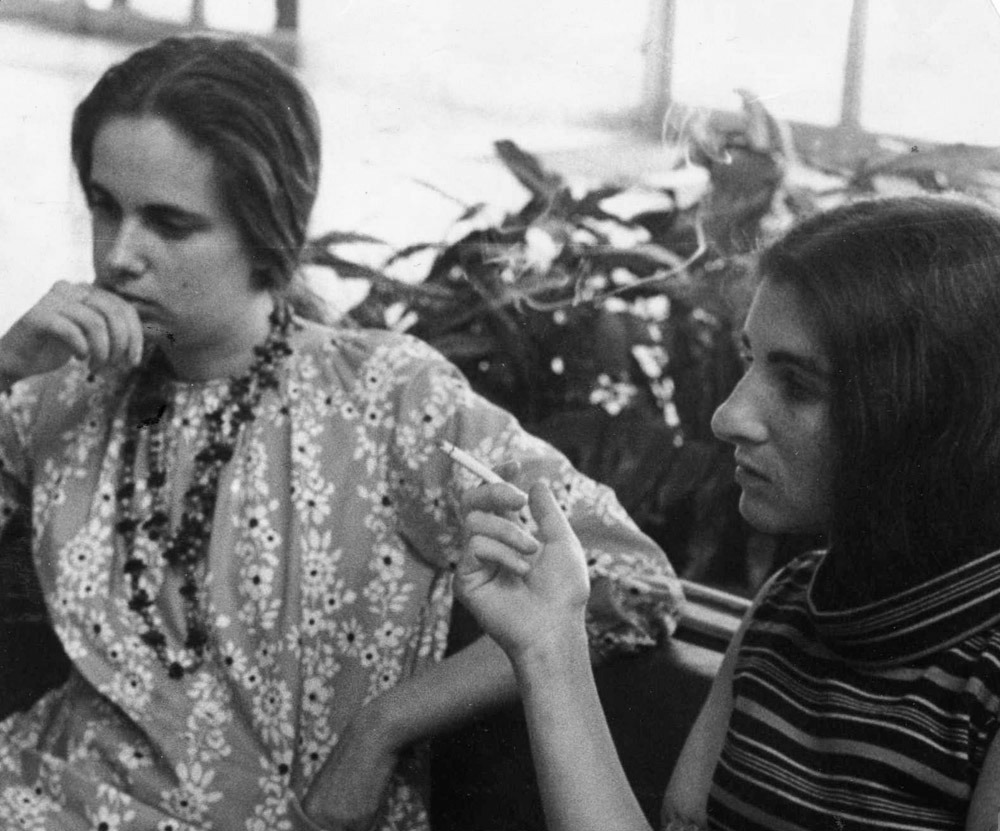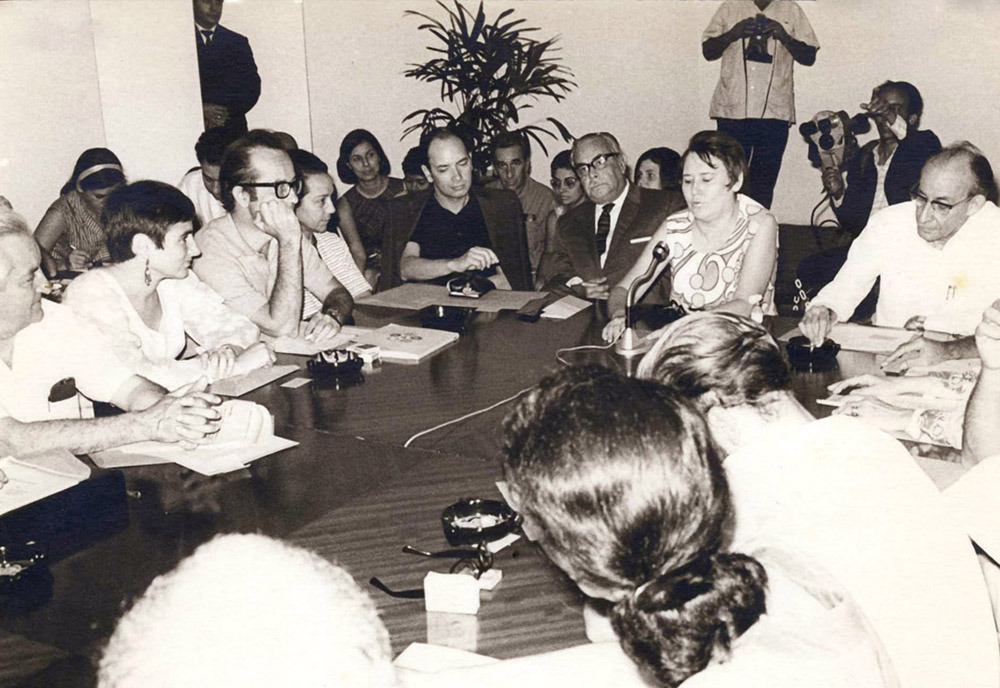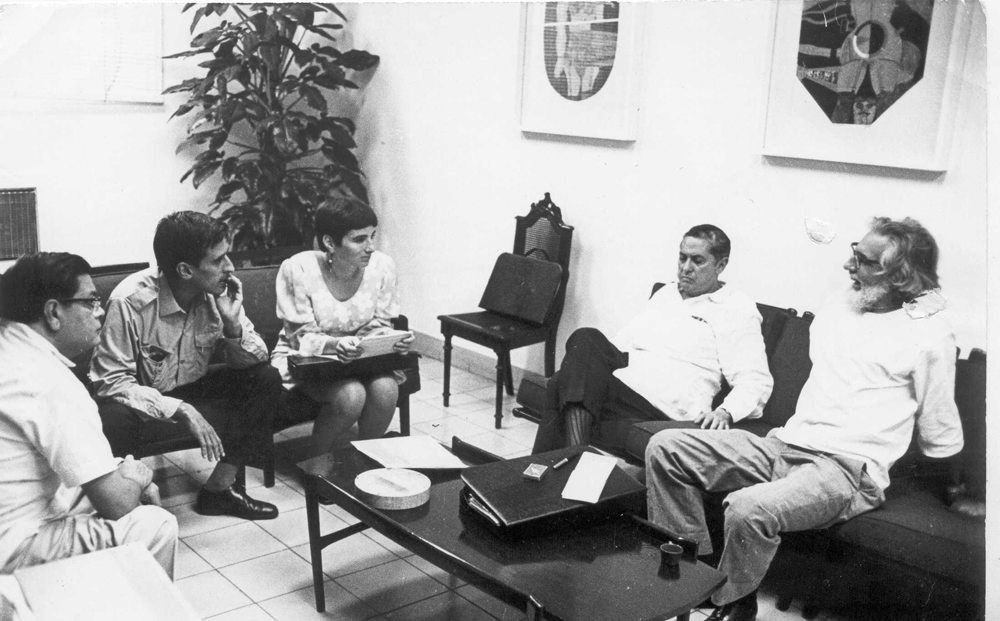(Talk given in Mexico City on January 16, 2015, at the University of Mexico’s Tlatelolco Cultural Center as part of a panel on El Corno Emplumado.)
In 1961 I was an aspiring poet and single mother of my first child, Gregory. I was living in New York City, beginning to meet other poets and seriously hone my craft. I had two slim, self-published poetry collections, had appeared in two or three literary journals, and braved my first coffee house reading. I was also experiencing a political awakening common to many of my age, young people who felt a restless nonconformity stifled by the chill of McCarthyism, even if we had been born too late to be direct victims of that repressive siege. In the summer of that year I boarded a Greyhound Bus with my ten-month old son Gregory and headed for Mexico City.
Only months before, I thought New York, or more accurately its Lower East Side, the only place in the world for a writer to live. I had grown up in New Mexico, and such was my provincialism. But it wasn’t easy, as a young woman who had given up on college to support my child and myself. The city was dramatically lacking in social services. I thought: well maybe I’ve gotten what I can from New York. I was adventurous and believed life in Mexico might be easier. It turned out to be. I had household help and more flexible hours in a society that was laid back and loved children. Mexico was also politically and culturally illuminating. Living south of the border I learned fast about the relationship between US domination and the dependent nations in its orbit.
1960s Mexico was alive in ways I hadn’t experienced. The ancient Maya and Aztec sites were still being avidly explored, their secrets only partially unearthed. Mexico City itself was built over the great pre-Columbian city of Tenochtitlán, and the membrane of time between the two was astonishingly thin. Gregory and I were fortunate enough to accompany one of the country’s great archeologists once a week to her dig at Teotihuacán, where my toddler played among 4,000-year-old relics and I learned about a culture that startled me in its complexity. More contemporaneously, Frida Kahlo remained a palpable presence. Several of the great muralists were still alive and painting.
Mexican poets as well as philosophers and writers from other countries were also active. They had found refuge from the Spanish Civil War, the Nazi occupation of Europe, and other dangerous situations. I’m thinking of the tradition that includes Julio Antonio Mella, Leon Trotsky, Victor Serge, my archeologist friend Laurette Séjourné, Leonora Carrington, León Felipe, Edward Weston, Tina Modotti, Anita Brenner, Cedric Belfrage, Mathias Goeritz, Agustí Bartra, and Erich Fromm. Looking back, I believe that Mexico’s long tradition of sheltering people in trouble, which later extended to its embrace of Latin Americans fleeing the brutal dictatorships of the 1970s and ‘80s, created a milieu in which creativity flourished.
The story of how I came to frequent Beat poet Philip Lamantia’s apartment in Colonia Cuauhtémoc, interact with other young poets there, begin my relationship with Sergio Mondragón and co-found El Corno Emplumado / The Plumed Horn with him, is one I have told many times; so I’ll be brief. The dozen or so poets who gathered at Philip’s apartment were from Mexico, the United States, and several Latin American countries. We read our poems to one another and quickly discovered we didn’t understand them in any depth. Spoken language was not our only challenge; we were also ignorant of each other’s mentors. A lack of good translation had kept those of us in the North from knowing Vallejo, Neruda, Mistral, or Huidobro, and those in the south from reading Whitman, Williams, Pound or H.D. A few inadequate or shockingly bad translations were available from major publishers. More often, no translations at all existed.
So the need for skillful translation was a big motivator in starting the magazine, although we would soon learn that producing acompletely bilingual publication was beyond our ability or means. Sergio and I launched El Corno Emplumado in January 1962. Its very first issue included original work by such luminaries as Nicaraguan poet/priest Ernesto Cardenal, French/Mexican anthropologist Laurette Séjourné, Spanish poet León Felipe, English surrealist painter Leonora Carrington, and US abstract expressionists Elaine de Kooning and Milton Resnick. By issue #2, we had added work by US poets Robert Creeley, Paul Blackburn, and Robert Kelly, Mexican poet and novelist Rosario Castellanos, the German Werner Brunner, and the great Peruvian poet César Vallejo in English translation. Throughout El Corno’s life, energetic new voices always alternated with those who were better known.
Oddly paired words were popular as catchy titles adopted by cultural projects at the time. The journal’s name was meant to evoke the jazz horn that symbolized US culture and the plumes of the ancient Mexican deity, Quetzalcoatl. We sought manuscripts from the most imaginative young poets in several countries. We translated as much of it as we could, or commissioned translations from others. Gradually poets who were not so young, but who rejected the restrictive limits of academia, also sent us their work. We were a great emerging web of word crafters, weaving our individual strands in a communal story that reflected the lives we were living, not those the professors or publishers or critics were trying to convince us were appropriate or safe, or would mark us for success.
Sergio and I walked the streets looking for financial support. I remember visiting José Gorostiza, then Mexico’s Secretary of Foreign Relations and author of an important long poem called “Muerte sin fin” (Death Without End), among others. After listening to our plans, he reached in his desk drawer, pulled out a thousand-peso note and handed it to us. It would be hard to imagine getting in to see such a high government official here, much less that he or she would be interested in supporting an alternative literary endeavor.
Several questions emerge as I write these lines: What cultural history—in Mexico, throughout the Americas, and farther afield—created the perfect storm in which a journal such as El Corno, unaffiliated with any institution,was born and could prosper for eight years? What needs did it fulfill? How could two young people (Sergio was 26 and I was 25) successfully keep such a journal going without connections to money? Was our freedom from institutional sponsorship, in fact, one of the things that allowed the magazine to prosper? What percentage of our project was imagination, what part passion, what part hard work? What was the connection between our personal relationship and our curatorial decisions? What impact did our diverging views eventually have? How did Sergio and I compliment each other, how did we grow apart, and what did that arc mean for the journal? And, finally, what is El Corno’s legacy?
Sergio and I were disciplined and serious. Like clockwork, and against every odd, we produced an issue every three months. The first had 100 pages, and they soon averaged 200 to 300. Poetry was central, but essays, short stories, journals, artwork, cartoons, comic strips, manifestoes, reviews, contributors’ notes and a letter section were also part of the package. Each issue opened with an editor’s note (written by both editors and published in the original and translation) or two notes written separately. These were meant to set the tone. Some people have suggested that reading the evolution of those notes one can follow the journal’s development. I have always believed this to be a simplistic assumption.
One of the magazine’s most eagerly anticipated features was its letter section, in which poets from different latitudes wrote about what was going on in their countries, described cultural contexts, discussed ideas and struggles. Travel has always been important to writers, and on occasion these poets were also writing far from their homes. In our #5 (January, 1963) we published a letter from Gary Snyder, then in Kyoto, Japan. The following is a fragment:
America five hundred years ago was clouds of birds, miles of bison, endless forests and grass and clear water. Today it is the tired ground of the world’s dominant culture . . . Industrial-urban society is not “evil” but there is no progress either. As poet I hold the most archaic values on earth. They go back to the Neolithic: the fertility of the soil, the magic of animals, the power-vision in solitude, the terrifying initiation and rebirth, the love and ecstasy of the dance, the common work of the tribe. A gas turbine or an electric motor is a finely crafted flint knife in the hand. It is useful and full of wonder, but it is not our whole life.
After only the first two issues, in #3 (July, 1962), Kathleen Fraser wrote from Paris:
Today, walking along the Seine to soak up last remnants of bookstalls faces fish towers I happened into the Mistral bookshop where one always goes to get warm even if all the recent periodicals have been devoured twice around. Today, luck. In the reading room, your new first issue. I read it from cover to cover and was delighted with the offering. Not just one kind of sound. Room to stretch.
Jackson MacLow also appreciated El Corno’s diversity: “I like the breadth of work you include; you don’t restrict yourselves to any one group. (Walter) Brunner and (John William) Corrington were real discoveries for me.” And Ernesto Cardenal, in the first of what would be many letters, promised:
I’ll publicize the magazine everywhere. I imagine you’ll continue energizing Mexico. You will energize all of Latin America as well. We must create a movement that renovates, that puts an end to complacency, the idea of a consecrated literature, the rhetoric they have imposed on us, the dogma, the conspiracies of silence. (Translation by MR)
From as far away as Bihar, India, Malay Roy Choudhury wrote:
We have started a literary rebellion here, calling ourselves HUNGRYALISTS. Allen Ginsberg who came to India and stayed with us for about a year introduced us to his fellow Beats. I shall be glad, naturally, if you please send your works translated into English so that we can translate them in our languages and introduce you to a large and interested audience down here. You know perhaps, people in India speak many languages: Bengali, Hindi, Tamil, Telegu, Kanari, Malayalam, Gujrati, Marathi, Gurmukhi, Urdu, etc. (#9, January 1964)
In #11 (July, 1964) Lawrence Ferlinghetti wrote: “No. 10 of CORNO is great. Much better than any former issue, I think. Especially the drawings by Topor, the Indian primitive poetry, and the Brazilian concretions.” And he went on to request Topor’s address so he could ask him for a drawing he wanted to use on the cover of a book he was about to publish.
Poets shared the essence of their wanderings. Matti Rossi, the Finn who translated the rich selection of Finnish poetry that appeared in #14 (April, 1965), wrote us often. In a letter in the issue that included that anthology, he explained that he had learned Spanish in Mexico some years earlier:
I learned to speak. It took me a month. Puebla, Yucatan, Chiapas. The places I most loved. I traced the old pathways of the Mayab, saw a lot, suffered some, made great friends, didn’t want to miss out on a single day, even slept with my eyes open. (Translation by MR)
The writer and social analyst Thomas Merton was a Cistercian monk who lived at Gethsemani Abbey in Kentucky. We often published his poems, drawings and correspondence. These fragments from a letter that appeared in our #24 (October, 1967) reveal much of what he was about, and are also eerily prophetic:
Every once in a while someone wonders why I am a monk, and I don’t want to be always justifying . . . because then I get the false idea that I am a monk. Perhaps when I entered here I believed I was, and kept it up for five, ten, fifteen years, even allowed myself to become novice master and tell others what it was all about. No more. I live alone in the woods and have as far as feasible for me copped out of the monastic institution. Of course that too is delusion. That is why I understand what you feel about Cuba. But unfortunately all the big societies now seem to me to be so built on lies and fake rituals they are really unlivable . . . I wonder if we are getting around to one of those times when we ought to be saying goodbye and getting ready for God knows what, the bombs, the camps, another round of the same. For the US, if it is not nuclear war that lies ahead then it is some form of fascist violence I think. Whatever it is, I’ll stay in it, and try to keep in contact with the poetic underground! I look forward to the next Corno, Love, Tom.
This sense of impending doom (desperation), counterbalanced by passionate poetic vision (hope), permeated every one of the journal’s issues. So did the appreciation for what we were doing. In #28 (October, 1968), Walter Lowenfels wrote:
We are surrounded by barrages of what to do to stay young. But the problem nobody seems to write about, or teach us about, is how to grow old, how to wage daily battles against nostalgia. For poets & editors it’s a very practical affair: how to keep up with tomorrow. Among the 90,000 “best poets of our generation” that throng the publishing highways of the USA, there are innumerable circles, few of which are aware of the others. In the Lowell-Auden-Kunitz circle, the Sonia Sanchez-Olga Cabral-Clarence Major circle doesn’t exist.
Many letters gave news of deeply rooted struggles for justice. In #26 (April, 1968), the incomparable people’s artist Rini Templeton wrote from northern New Mexico:
It was very good to see your issue #23 with the work of Cuban poets. How much light pours through when someone does make a hole in the blockade-blackout. Things have been happening here: the armed attack at Tierra Amarilla in the spring, the growing militancy and unity in the Mexican-American people since then.
Our letter section was also a place where poets could express opposing views and defend ideas about art and society. These ideas were sometimes in conflict, and we encouraged these disagreements put forth by one or another. In #17 (January 1966), Roger Taus urged the magazine to stand solidly against “the main enemy of the peoples of the world: US imperialism.” He saw no room for any other stance. Two issues later (#19, July 1966), this brought a response from Ted Enslin in his self-sought refuge in Maine’s woods:
I am disturbed by the increasing instance of political insistence. I know these pressures exist, and certainly I feel as strongly as any about Viet Nam or the incredible USA Machine, but [politics] has absolutely no place in poetry or art of any kind, no didactic cant does.
Enslin interpreted all concern with political issues as cant. British-American Denise Levertov was eloquent in her response. In #21 (January, 1967) she rebutted Enslin’s argument point by point, and then went on to differentiate between art and propaganda writing:
What is wrong (and ultimately useless) is the deliberate use of something that seems to be poetry (but isn’t) for propaganda purposes. The difference is that on the one hand one has a poet impelled towards words, the words of a poem, by feelings and convictions that may or may not insist, within him, on the didactic; and on the other, a person deciding that a poem on some political theme might be “effective.” The latter person may be sincere in his beliefs, but he is misusing poetry.
(The consistent use of the male pronoun, even by such a strong female poet as Levertov, was standard at the time.)
From 1962 to 1965, the last issue of each year was a bilingual book devoted to the work of a single poet; alternating years showcased those writing in Spanish and English—Catalan Agustí Bartra’sMarsias & Adila, US Robert Kelly’s Her Body Against Time, Peruvian Raquel Jodorowsky’s Ajy Tojen, and The Man In Yellow Boots by Canadian George Bowering. Those volumes also contained letters between the author and editors, revealing directions in the writing and/or publication process. Process was always important to us: how things came about, how the work was made, what changes might take place along the way. El Corno eventuallyalso developed its own book imprint, with more than 20 titles.
When I speak about El Corno, I speak about Sergio and myself. I do so because we were the driving and sustaining forces behind the magazine. Harvey Wolin was with us our first two issues, but withdrew right after they came out. Robert Cohen had a longer and more influential tenure at the end, helping me edit the last three issues. From time to time we had editorial assistants, poets and artists who volunteered to help out and did so for a few months. But the initiative, glory, and weaknesses rightfully belong to Sergio and to me.
Our cultural histories, personally as well as those of our respective countries, could not have been more different. I came, as I say, from a nation rife with Cold War bias. Art was not supposed to reflect so-called political concerns. The myth of impartiality, that had long kept journalists in line, now controlled writers and artists as well. Senator McCarthy himself had been discredited, but his influence lived on. All the major literary grants were awarded to sanitized poetry or prose that made no discernible waves. Publishing, whether books, anthologies or magazines, rewarded that which was safe. Except in places such as El Corno, creative people were hesitant to discuss the fabricated clash between poetry and politics.
Master of Fine Arts (MFA) programs emerged at several prestigious universities, and began turning out poets who played by the rules. Some important books were condemned in the courts or by the US Customs Service, and banned as pornographic.[1] Meanwhile, United States society wallowed in postwar affluence, technocracy, and hypocrisy. Texts featuring strong women were not publishable. It was taboo to write or talk publicly about such topics as sex apart from male lust, shame, domestic violence, abuse, and infidelities—although perpetrating or suffering them was obviously the norm, crossing every class and cultural line. Silence was rewarded, truth unacceptable.
Young US poets—those of the San Francisco Renaissance, the Beat movement, Black Mountain, Deep Image and others—revolted against these strictures. We exposed the hypocrisy, and refused to speak the language of those who would confine us to a Levittown of the mind. A few women were asserting our power. We were interested in memory and history. Many of us experimented with hallucinatory substances. Personally, I had grown up on the New Mexican desert but moved to New York City where I quickly fell in with poets and painters who were seeking the new. I was a free-spirited outspoken young woman, on the cusp of a world I absolutely expected to be able to change.
In Sergio’s Mexico, on the other hand, young poets had access to an unbroken legacy of artistic expression. They lived in a country that appreciated and respected the arts. They were beginning to search out New World writers rather than looking to Europe, which had long been the inclination of 20th century poets. Indigenous writers began to be important (this was also happening, although to a lesser extent, in the United States), and ancient cultures had a vital presence in contemporary life. This mix of the indigenous, a fragile line between the real and surreal, and an inborn ability to suspend disbelief, gave birth to a writing style that some years later, when Latin American literature experienced The Boom, would be called Magic Realism.[2] At the same time, as liberation movements gained momentum across Latin America, some guerrilla fighters were also very good poets. I’m thinking especially of Nicaragua’s Leonel Rugama and Guatemala’s Otto-René Castillo.
As mentioned before, Mexico’s tradition of welcoming poets fleeing repressive regimes also made for a rich mix of talent. And Mexican governmental agencies (Bellas Artes, the Presidency, the Secretary of Education) gave generously to artistic projects. Sergio was a young poet living and writing in the midst of this vortex. When we met, he was already beginning to project a unique voice. I was powerfully attracted to its timbre.
In Mexico I literally saved myself from the poetic tedium I might have inherited had I majored in literature at a US university or tried to insert myself into an institutional setting in my country of origin. I was influenced by the Beats and Black Mountain, but wasn’t really part of either movement. Of course I could have continued to live and learn in New York City, and my work would have developed well, albeit differently. But Mexico broadened my perspective. My imagination soared in ways that were qualitatively different from those ignited by my earlier more insular experience. And El Corno put me in touch with poets from across the globe.
I brought my New York verve, energy, and organizational sense to Sergio’s much greater knowledge of Latin America. The evenings at Lamantia’s gave us both a strong sense of what we and other young poets needed: a vehicle through which we could come to know each other’s work. Who can say why we came together, grabbed the moment, and responded so explicitly to our conviction that birthing a bilingual poetry magazine was urgent and possible. Perhaps it had to do with chemistry. Each of us was at a transitional point in our lives, unburdened by a 9 to 5 job. The energy of new love certainly helped. The historic moment was key. Excitement at discovering cutting edge work pushed us to make that work broadly available.
Looking back, I think our success had a lot to do with the fact that we were young. We simply never considered that what we were attempting wasn’t possible. Once our first issue appeared, news spread, poets and artists began contacting us, and soon our post office box was receiving letters and submissions by the hundreds.
When I think about what communication was like back then, it’s hard to recreate a sense of its ponderous rhythm. A letter or envelope of poems typically took three months to travel from Buenos Aires or New York to Mexico City. Postal costs meant that heavier packages traveled by ship. As El Corno’s fame spread, poets came to see us. Our house was always full of US or Canadian poets on their way south, Latin poets going north, or poets from Europe or some other part of the world who were drawn to Mexico as if by a magnet. Long distance telephone calls were out of the question. Email was beyond our wildest imaginings.
Every day one of us stopped at the post office where we rented a box that invariably held surprises. Even the postal workers knew and loved the magazine. In its last year, when Mexico’s political forces were particularly antagonistic, our mail was often withheld for days at a time. Then we’d receive a bundle all at once. We always assumed government agents were behind this erratic delivery. But a few years ago I received an email from a man who said his father had worked at that post office branch. He told me he’d recently died in an accident, leaving several copies of El Corno among his possessions. The son said that it was his father who, all those years before, hid our mail when government agents came around, returning it to us when they had left the premises.
Was El Corno Emplumado an underground magazine, in the honorable tradition of so many Leftist publications? No, because it was sent through the mail, sold in bookstores worldwide, and overt political ideas were only one part of what we put out there. Poetry was our currency, and our aim was to reach as many readers as possible. Still, as Merton had remarked, it had something of the underground spirit; if by that we mean unorthodox, unreserved, unapologetic. We chose to print works of literary undergrounds carving places for themselves on every continent.
We were also graphically adventurous for the times, and without any special training. We believed that typography should support content, not the other way around. So we printed poems with long lines sideways on the page, rather than breaking them to conform to standard format requirements. Occasionally, we included pages that unfolded, accordion-style. We also sometimes printed drawings this way, as in issue #5 (January, 1963), which was illustrated with reproductions from Mexico’s ancient codices. In #30 (April, 1969) we included an insert, a single folded sheet, with anonymous sketches smuggled out of one of the country’s overflowing political prisons. Our early covers featured continuous lines of repeated type; later we incorporated some stunning paintings and photographs.
The International Gathering of Poets was an event we hosted in February of 1964 along with Argentina’s Miguel Grinberg and Mexico’s Thelma Nava. It brought together creative people from a dozen countries. Many of them “flew now and paid later” or sold a piano or automobile to be able to make the trip. They slept on our couches and floors. Puerto Rican artist Jaime Carrero kept busy sketching the participants. Salvadoran Roque Dalton showed up with a knapsack of poems and a story about having escaped from a CIA prison when an earthquake cracked open its walls.
The webs of creative contact we established were almost as significant as the Internet would be decades into the future. Perhaps more significant because, unable to make use of email or the Internet, we looked into each other’s eyes, read our poems aloud to one another, shared meals, hallucinations, the joy of our growing families and the languages we were reinvigorating and making our own. One piece of that 1964 gathering was an open mic reading in Chapultepec Park that lasted more than 30 hours.
The reality of the magazine didn’t only attract young poets. Those who were more established also sent us their work. Ernesto Cardenal and Julio Cortázar were avid supporters. Samuel Beckett and Norman Mailer sent checks. We published César Vallejo, Rafael Alberti, Thomas Merton, Ezra Pound, William Carlos Williams, Nicolás Guillén, Rainer Gerhardt, Kenneth Patchen, Pablo Neruda, José Lezama Lima, Nicanor Parra, León Felipe, Eugenio Montale, Louis Zukofsky, Octavio Paz, Walter Lowenfels, Laurette Séjourné, and André Breton. Nobel laureate Hermann Hesse sent us an unpublished poem. We printed it bilingually in July 1962; he died a month later.
Important emerging talents who appeared in our pages included Bella Akhmadulina, Yevgeny Yevtushenko, Pablo Armando Fernández, Leandro Katz, Ed Dorn, Roberto Fernández Retamar, Jerome Rothenberg, Raquel Jodorowsky, Otto-René Castillo, Anselm Hollo, Besmilr Brigham, Roque Dalton, Yannis Ritsos, Hans Magnus Enzensberger, Alejandra Pizarnik, Paul Blackburn, Nancy Morejón, Cecilia Vicuña, Gary Snyder, George Bowering, Lawrence Ferlinghetti, Allen Ginsberg, Diane Wakoski, Susan Sherman, Denise Levertov, Gary Snyder, Mario Benedetti, and Charles Bukowski.
We also featured the work of many great visual artists: Leonora Carrington, Elaine de Kooning, Posada, David Alfaro Siqueiros, Franz Kline, Felipe Ehrenberg, Carlos Coffeen Serpas, Nuez, Bruce Connor, Halvaro Barrios, Eddie Johnson, José Luis Cuevas, Marcos Huerta, Alberto Gironella, Connie Fox, Antonio Seguí, Sylvia de Swaan, Judith Guitiérez, Mariano, Argeliers León, Antonia Eiríz, Mathias Goeritz (Werner Brunner’s pseudonym), Arnold Belkin, and Pedro Alcántara, among others; and great photographers such as Nacho López, Mayito, George Cohen, and Lawrence Siegel.
The foregoing list might seem like a boastful compendium. But what’s most interesting about it is that although many of these men and women were already well known, others weren’t. We discovered new talent as delightedly as we published the famous writers who honored us with their texts. I’ve always been proud of this, especially when it allowed our readers to experience work written in one language accurately and elegantly in another.
Early on, Cassius Clay (later Mohammed Ali) sent us a collection of haiku-like poems against the American war in Vietnam; they didn’t correspond to my sense of good poetry, and I made the mistake of not accepting them! Norman Mailer also sent poems I didn’t like; when I returned them he responded with the check, bemused. Sergio and I always prided ourselves on not letting friendship or fame get in the way of our criteria for accepting or rejecting submissions. Most often this was good policy; sometimes it backfired.
El Corno’s last issue appeared in the summer of 1969 (#31, July 1969), just before feminism’s second wave exploded across the face of Western consciousness. As we solicited and selected work for the journal, we never thought of the gender of those who produced it. Like almost everyone else at the time, we were mired in the patriarchal idea that most good writers and artists were men, with the occasional woman who “wrote or painted like a man.” When I look at the magazine today, this lack of gender consciousness stares back at me. I believe it was our greatest failing. In our defense, I can say that very few of us possessed a gender consciousness back then. But we prided ourselves in being ahead of the curve, and I have always felt critical that I was unable to challenge that particular bias.
Another failing was our careless proofing. Too many typographical errors appeared on our pages. This attained such dramatic proportions with a particular book that the author demanded all copies be destroyed. Two people did almost everything, but there really is no valid excuse for sloppy proofreading.
We did better in other areas. We were conscious of wanting to present a range of political and spiritual ideologies, and so we published Beats alongside Language Poets, Communists and guerrilla fighters alongside Catholic priests and mystics. We did so even after Sergio and I began moving in different ideological directions. He became involved in Buddhism and favored mystic or ecstatic texts. I saw Cuba as the society of the future, and gave more space to those writing from a revolutionary perspective.
Each of us continued to publish the work he or she favored, and each favored work of quality. But El Corno began to resemble two magazines in one. Despite this disjuncture, the journal’s contents remained electrifying. Because we sought integrity, originality and craft, and because we developed such a broad network of contacts, we always published texts that were diverse and interesting. They were diverse in terms of race, ethnicity, nationality, style, and content, and interesting because they were so often experimental and imaginative.
Neither Sergio nor I ever took a salary. El Corno was a labor of love. On several occasions we ourselves paid a printer’s last installment, or otherwise made up a deficit. Of course we didn’t pay our contributors either, and artists who had given us original drawings often allowed us to sell them to benefit the magazine. Today I strongly believe in poets and artists being paid for our work, but our utopianism back then rendered such remuneration impossible.
Financing the magazine was always a problem. We had no business sense, nor did we necessarily want one, since we saw sound business practice as indicative of capitalist greed. In this respect, our youthful idealism got in our way. We sold copies in each country for what we were told a young poet there could afford to pay. Mostly this meant $1 a copy, sometimes even less. Bookstores ordered the journal, but in many cases delayed paying their bills. We had a few ads. A small amount of what we needed came from subscriptions, which were $3 a year, and I don’t think our subscription list ever exceeded 300. When you consider that each issue cost us approximately $1,500 just to print, the problem is obvious.
Most of our funding came from Mexican government agencies. These didn’t interfere with what we published as long as our poets and writers were railing against the US American war in Vietnam, describing the struggle for civil rights in the South, or reporting on movements for free speech around the world. But this freedom of expression didn’t extend to Mexico’s internal politics. In 1968 we strongly defended the Mexican students who had risen up against government repression. At that point, all government support stopped abruptly. Because we had an international following, poets in New York or San Francisco, Caracas or San Juan de Puerto Rico held benefits that enabled us to continue. But not for long.
El Corno Emplumado filled a tremendous need: for poets, writers, and readers of literature in many countries. Along with a number of other independent magazines that flourished in those years, it was a voice of nonconformity, of resistance to a stultifying status quo, a loud answer to those who told us poems could only be written about subjects approved of by whatever academy was in vogue. We believed poetry could be written about anything, that a poem was good or bad if it grabbed you or didn’t, was well crafted or not. Needless to say, ideas about craft are not static. They change with the times, and it’s unlikely that we would have recognized back then some of what we accept today.
El Corno Emplumado filled a tremendous need: for poets, writers, and readers of literature in many countries. Along with a number of other independent magazines that flourished in those years, it was a voice of nonconformity, of resistance to a stultifying status quo, a loud answer to those who told us poems could only be written about subjects approved of by whatever academy was in vogue. We believed poetry could be written about anything, that a poem was good or bad if it grabbed you or didn’t, was well crafted or not. Needless to say, ideas about craft are not static. They change with the times, and it’s unlikely that we would have recognized back then some of what we accept today.
I want to stress that we were not alone. The 1960s and ‘70s saw a great renaissance of independent cultural projects. Among the literary magazines in Mexico were Pájaro cascabel and Cuento. Eco contemporáneo and Airón in Buenos Aires, El techo de la ballena in Caracas, Los tzántzicos in Quito, andTrojan, The Floating Bear, Caterpillar, Ikon, Monk’s Pond, The Sixties and many others in the United States were just a few of the several hundred that regularly exchanged issues with El Corno. This exchange was an important part of the network we were creating, and allowed us to keep up with what poets were doing beyond our own pages.
One big difference between these journals and El Corno Emplumado, though, was that we bridged cultures. And it wasn’t just Spanish and English; we published translations from a number of other languages, including several indigenous tongues, both north and south of the border, and even from pre-conquest Mesoamerica. We took very seriously the idea that we were a bridge: between cultures, ideologies, generations, language usage and ways of constructing the poem.
We also believed that poetry could change the world. We subscribed to a loosely defined sense of freedom through the word. We talked about “the new man” (we included women in the term). Early on, that meant a more spiritual and egalitarian human being, in touch with his or her imagination, unburdened by consumerism, resistant to solving problems through war or other forms of violence, and opposed to the hypocrisy around us.
Later, this “new man,” at least for me, was more aligned with the person Che Guevara wrote about in Man and Socialism in Cuba. My more practical Yankee nature wanted palpable results, and I believed revolution to be the surest road to them. Sergio admired Guevara’s concept, but was also interested in the Buddhist principles of mindfulness and nirvana. He saw spiritual change as more important. Interestingly, long after El Corno Emplumado stopped publishing, our poet selves brought us closer together again. I believe that today each of our visions of a new human being includes something of what was important to the other back then. I know my own concept of what constitutes a good poem is also much more inclusive.
Poetry is either good or bad, works or doesn’t. El Corno included a great deal of excellent work in a range of voices. We regularly published US, Canadian, Uruguayan, Guatemalan, and Peruvian poets, the Nadaistas of Colombia and the concrete poets of Brazil. We featured the great Haitian poet René Depestre. We produced anthologies of new poetry from Mexico, Argentina, Finland, Cuba, Canada, Brazil, Colombia, Venezuela, Nicaragua, Guatemala, Chile, Uruguay, Algeria, France, Greece, the Netherlands, Norway, Spain, and Russia; and individual poets from China, Rumania, Poland, India, Australia, Israel, Japan, and Panama.
In Mexico, Juan Rulfo, Rosario Castellanos, Felipe Ehrenberg, Laurette Séjourné, Leonora Carrington, José Luis Cuevas, Octavio Paz, Carlos Pellicer, Juan Soriano, José Emilio Pacheco, José Carlos Becerra, Homero Arídjis, Thelma Nava, Juan Bañuelos, Juan Martínez, Efraín Huerta and others were important repeat contributors. We broke through the US-imposed cultural blockade and made Cuban poetry available to a Western readership. El Corno Emplumado published major work by Allen Ginsberg for the first time in Spanish and by Ernesto Cardenal for the first time in English. This is nowhere near a complete list. Over our 8-year run, we published more than 700 poets, fiction writers, and visual artists from 37 countries, many of them several times.
1968 was a watershed year in Mexico. Students, ultimately joined by workers and farmers, staged giant protests against governmental overreach and wrongdoing. The vast majority of the country’s intellectuals and artists sided with the students. Similar upheavals took place that year in the United States and France. But Mexico City was about to host the Olympic games, and the Diaz Ordáz administration was fearful of losing its huge investments. It unleashed a deadly crackdown ten days before the games opened. Along with this violent repression, it withdrew patronage for progressive ventures, and most of the small literary magazines had to shut down. El Corno Emplumado gave its unequivocal support to the movement. It was finally forced to cease publication when I went underground in 1969.
In the summer of that year, after armed paramilitary operatives came to our home, I went into hiding along with my four children and Robert Cohen, the father of my youngest. Little Ana was just three months old. We eventually immigrated to Cuba. El Corno had remained true to its principles and as a result had been forced out of existence. But, as in similar cases before and since, its legacy multiplied.
The most reliable evidence of this legacy can be found in the hundreds of young poets who have written to me over the years. They say El Corno was the inspiration for their own projects: literary journals, translation, art collectives, and film and theater groups: all of it independent, searing and cutting-edge, and all exploring new ways of linking creativity and change. Many of these endeavors credit El Corno with paving the way.
In 2005, two young filmmakers, Anne Mette Nielsen of Denmark and Mexican Nicolenka Beltrán, produced a wonderful documentary called El Corno Emplumado: una historia de los sesenta. Anne Mette and Nicolenka were the same ages Sergio and I were when we started the journal. With few resources and having to confront the obstacles all first-time filmmakers face, they traveled two continents in order to tell our story. The result is a beautiful 54-minute documentary.
I was moved to tears by the film’s original footage from the aftermath of the massacre at Tlatelolco, footage that hadn’t been shown in Mexico in the 30 years following that tragic event.[3] Another scene I remember is the one in which Sergio takes the filmmakers to a small print shop, one of only a few still operating at the time in Mexico City, where the owner demonstrates the old linotype hot lead method of reproduction now practiced almost nowhere. The slow methodical rhythm of that process reminds me of how artisanal our work was back then, how technically old fashioned but hands-on. I saw this film for the first time at the 2006 Guadalajara Book Fair, one of its inaugural showings. It was standing room only, and dozens of young poets testified to El Corno’s importance in their lives.
It was museum curator and cultural analyst Robert Schweitzer who suggested the idea of the film to Nielsen and Beltrán, and vigorously supported the project. Speaking of the journal, he describes one way in which it also informed his own work:
I came to El Corno somewhat late, not when it was the link and lifeline connecting North to South in ways that would help shatter the intellectual and creative divide that characterized the long history of imbalance and arrogance perpetuated by the North. Although I knew of it before then, it wasn’t until the mid 80s, when I was a museum curator, that the meaning, significance, and profound value of this little magazine became most clear and relevant to me. I was involved in the expanding dialogue on the cultural and social issues regarding “the other” and post-colonialism. El Corno had been a touchstone for what was possible, especially during the period before the computer and the networking that would eventually come through that technology. Some years later the journal became a major conceptual component for an exhibition I curated in 2002.
El Corno Emplumado stood apart from, and in many ways against, the academy. But the academy took note of El Corno. Many university libraries hold complete sets of the magazine. Its partial papers (those we thought to save) are housed at New York University’s Fales Special Collections Library and the Harry Ransom Center of the University of Texas at Austin. And in 1994, University of Utah Ph.D. candidate Alan R. Davison wrote his dissertation on the journal. He, too, viewed it as speaking for the decade. He titled his study El Corno Emplumado, The Plumed Horn: A Voice of the Sixties. I asked Davison if it had been difficult to convince his doctoral committee to approve the rather unorthodox dissertation topic. In a November 2014 letter, he reminisced:
There was no resistance from my committee members to the project as a whole, but one member withdrew a month before my oral defense citing my “lack of attention to feminist issues.” Fortunately, several weeks after she withdrew I received the letter in which you [explained that]. With that letter in hand, I successfully defended the project.
As for The Corno’s importance in the literary history of the Americas, I believe that story is still being written. Though your and Sergio’s efforts were little short of Herculean at the time, it is entirely possible that the journal (in its digital form) will reach a greater audience in the future. The Corno is an inexhaustible compendium of attempts (both failed and successful) to broaden the poetic canvas; many of its first-time translations of seminal poems are unsurpassed; it is a living document of the importance of hopefulness in the process of social and personal development. In short, The Corno’s message is as important today (maybe even more important?) as it was in the Sixties.
One way in which the journal’s legacy remains alive is in the memories of those who contributed to it, some many times over. Davison’s theme of hopefulness echoes in the following testimony by a poet who often appeared in our pages. Jerome Rothenberg sent me a text he delivered at New York University’s King Juan Carlos I of Spain Center a few years back. The event was built around a showing of Nielsen and Beltrán’s documentary. Nielsen moderated a discussion that included Sergio Mondragón, Rothenberg, and Cecilia Vicuña. Fragments from Rothenberg’s contribution give a vivid sense of the magazine and his involvement with it:
The Sixties as such is also an idea, and the idea gets repeated and modified over the intervening years, until it becomes, in anyone’s mind, more real and clearly more enduring than the time itself was. The difference between then and now, for me, is that then I lived with hope and now with only a kind of desperation. Yet it was at the beginning of the 1960s—which weren’t yet the 1960s as we speak of them—that Robert Kelly proclaimed for me (for us) a “poetics of desperation” in which we came to share. In relation to that and what followed, the real1960s (which included also the early 1970s) were a kind of time between—a liminal moment, as we liked to say, in which what was possible and hopeful dared to assert itself against the odds. And those odds, that oddness, meant a real war then in progress and a real clash of ideas in which we called for change and transformation—not just a change of political parties as now, but “a total assault on the culture.”
It was in that milieu of desperation and hope that El Corno began—part of a cultural underground that thought it was finally coming to the surface (to the light). Many of us had magazines and presses then (it was part of our privilege where we lived and worked) but with El Cornothere was also something different. In the US the greatest exultation among poets was over the flowering—and the domination—of North American poetry. (The “American grain” clearly as William Carlos Williams had it—not an imperial venture but pretty close.) But what Cornodid, what it brought together, were the two Americas—not only an international perspective but a truly collaborative venture across two or more languages and cultures.
For six or seven years . . . I was a recipient of the amazing mix of images and voices that was El Corno Emplumado. I had a place in nine or ten of their issues, and they were the publishers as well of my fourth book of poems, The Gorky Poems (Poemas Gorky) in 1966, a bilingual work with translations into Spanish by Sergio and Meg.
At 84, poet and essayist Roberto Fernández Retamar still presides over Cuba’s Casa de las Américas, the extraordinary cultural institution that continues to break through the cultural blockade imposed by the United States for more than half a century. In response to my inquiry, he wrote:
I remember El Corno Emplumado very well . . . The magazine contributed admirably to the production of poetic texts by authors from Latin America and the United States. And you frequently published Cuban poets, most notably when you devoted an entire issue to the Cuban poetry of the moment.
Of course I also remember my letter you published knowing that the consequences of doing so would be the loss of 500 subscriptions promised by the man who at that time was cultural director of the Pan American Union. We always thought of your magazine as a sister publication to our own Casa de las Américas, and considered it a great accomplishment, that we read gratefully each time we received an issue. (Translation by MR)
Nicaraguan poet, priest, and Minister of Culture during the first years of the Sandinista revolution, Ernesto Cardenal published in our first issue and many others. Today he is almost 90, and one of the greatest poetic voices of the language. In response to my asking him to send his memories of the journal, he wrote:
In the Sixties and Seventies of the past century Latin America saw the proliferation of literary movements and magazines, some with names that were strange if not downright bizarre, such as El techo de la Ballena (The Whale’s Roof), El topo con gafas (The Mole with Spectacles),Cormorán y Delfin (The Cormorant and the Dolphin, edited by an Argentine poet who had been a ship’s captain), and Sol cuello cortado(Beheaded Sun, a Venezuelan journal that was involved in the strange case of the kidnapping of a US military official). Among them was the bilingual magazine El Corno Emplumado (which also had a strange name), edited by poets Sergio Mondragón and Margaret Randall. He was Mexican and she from the United States. This was the journal that lasted the longest and also the one that exerted the greatest influence throughout Latin America. Many of us first published in El Corno, and we also communicated with one another through its pages. El Corno Emplumado contributed a great deal to Latin American literature, and I deeply regret its demise. (Translation by MR)
More than a few of the contacts I made through El Corno turned into deep personal friendships. Such was the case with Susan Sherman. When I asked her to describe her relationship to the journal, she touched on several aspects:
El Corno opened a new cultural and political space to me and served as inspiration for the founding of Ikon magazine in 1967. But most important, it was through sending poems to El Corno in the early Sixties that I began a correspondence with Margaret Randall. I finally met her in person when I traveled to the Cuban Cultural Congress in 1968, where we cemented a lifelong friendship. Without El Corno, and without Margaret, I would never have been exposed to the conjunction between the artistic and the political that literally changed my life.
The City University of New York’s Graduate Center produces a valuable chapbook series called Lost & Found: The CUNY Poetics Document Initiative. It emerges from archival work and contemporary textual scholarship being done by students in the English program. These slim books reproduce texts that have disappeared from public view, among them by such as H.D., Charles Olsen, Robert Duncan, Diane di Prima, Muriel Rukeyser, and Ed Dorn.
In 2011, series editor Ammiel Alcalay asked me to produce a chapbook on El Corno Emplumado. In a format of less than 50 pages, I was limited as to what I could include. There was no way I would be able to showcase the journal in all its breadth and depth. So I featured work from its first three years (1962-1964) and only from its English side—hoping I would have a later opportunity to cover successive years, or that Sergio would be invited to present something from the Spanish. I introduced the work from each issue by briefly describing the cultural milieu at the time, selected poems in the original as well as translation, and added an afterword that told the journal’s ongoing story. In the context of writing this essay, I asked Alcalay how he came to choose El Corno as the subject of a chapbook. The following is an excerpt from his reply:
Of course the international scope, the fact that you had created such clear & direct lines of affinity and communication across linguistic borders was crucial. The whole idea of Lost & Found has been to take the kernel of what has come to be known as “The New American Poetry” & just explode the limited notion of it, show how many satellites, stars & other planets composed the world it was. El Corno, of course, represented a very unique instance of this, with its international scope & yet very localized aesthetic, based in its place/s of origin. So when the opportunity came to ask you, it seemed like an absolute gift that we could do it - & I thought it could help focus some attention on the unique nature of El Corno, & possibly spark some further interest in reprint/digitization, research, etc.
About a year before Lost & Found, however, Harris Feinsod of Northwestern University wrote about El Corno in his Ph.D dissertation. Later, as part of a book project exploring the histories of relations between US and Latin American poets across the 20th century, Feinsod pursued a month of research with the 30, largely-forgotten boxes of archival material from El Corno housed at the Harry Ransom Center at the University of Texas Austin. He was moved by the power of that collection to plan an exhibition and full-time on-line digitization of the journal, supported by his institution. The artisanal web we had created with the magazine has thus been brought into the modern age. Although many libraries in a number of countries have them among their holdings, complete sets of El Corno Emplumado’s 31 issues are very hard to come by. So it is especially gratifying that all issues are now available digitally.[4] This should make the journal’s content available to many more readers.
I’ll end on a personal note. El Corno was a bridge, but it was also the beginning of my thinking of myself as a builder of bridges. A half-century later, that’s still true. And the thing about bridges is that they multiply: when you walk across one, others appear. Perhaps no one evokes this sense of circles rippling outward toward other circles better than Silvia Gil, longtime Casa de las América’s librarian. When I asked her to reminisce about her first memories of the journal, she wrote:
I think of my first years at Casa’s library, the institution I’ve worked at for fifty years. When I started there, dozens of publications arrived from all over the world. Those were the Revolution’s early years, and editors everywhere wanted Cuba to know what they were publishing. This was especially true for Latin America and the Caribbean. One after another, the magazines came. The one that particularly sparked our curiosity was El Corno.
Right away I wondered about its name: what in the world was a plumed horn? And what did all those crazy journal names from all over Latin America mean: Pájaro cascabel (Rattlesnake Bird), La rosa blindada (The Armored Rose), El Escarabajo de oro (The Golden Scarab), El pez y la serpiente (The Fish and the Serpent), La bufanda del sol (The Sun’s Muffler), Los huevos del Plata (La Plata’s Eggs), Alcor (Little Hill), Rayado sobre el techo (The Stripe on the Roof), El grillo de papel (The Paper Cricket), and dozens of others? They were the “eco contemporáneo”(contemporary echo)[5] of groups of restless and talented young people who, from one end of the Continent to the other, were intent on changing the world and believed that literature and art were their weapons.
In 1969, when El Corno Emplumado ceased publishing, Margaret had to leave Mexico and came to live in Cuba. Here she was my neighbor. Her apartment immediately became a gathering place for young people who aspired to be writers. Many of them have gained fame in Cuba and beyond. Not one of them has forgotten those gatherings. (Translation by MR)
Remembering a project that consumed me for eight extraordinary years almost half a century ago, I’ve tried to reimagine its daily presence and significance as I experienced it, and simultaneously through the filter of hindsight. Perhaps the most important thing I can say about El Corno Emplumado today, is that it fearlessly honored integrity and imagination, was an example of youthful vision and belief in the power of poetry, and a splendid bridge across which many creative spirits moved. Although the journal was forced to stop publishing 45 years ago, that bridge has multiplied many times over and points in directions we could not have imagined back then.[6]
[2] Although the term existed for several decades, it was the explosive literary Boom of the late 1960s and early 1970s that made the category familiar in other parts of the world.
[3] On October 2, 1968 the students held a peaceful rally at Tlatelolco, also known as the Plaza of Three Cultures because it is the site of an ancient ruin, a Colonial church, and modern high-rise housing. Government forces attacked the rally, firing into the crowd for close to five hours. The official death count was 26, but more realistic estimates range from 300 to 1,000.
[4] Reveal Digital is also in the process of digitizing El Corno.
[5] A pun because it is also the name of a prominent Argentinian little magazine of the era.
[6] Malpais Review is, among so much else, an inheritor of El Corno’s legacy.

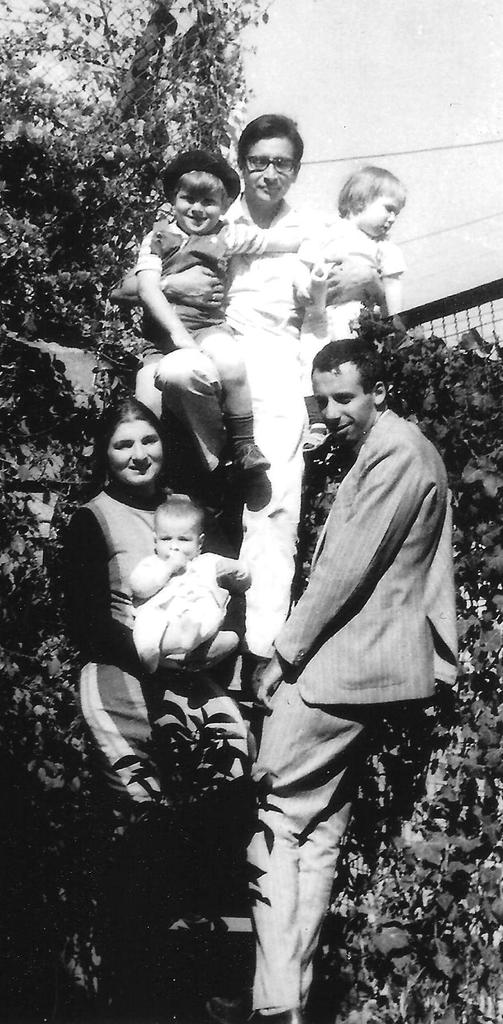
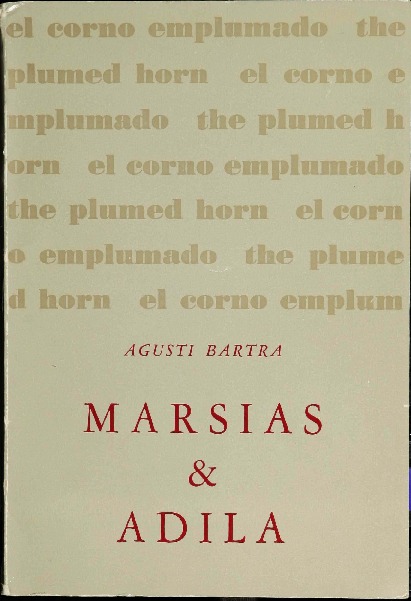
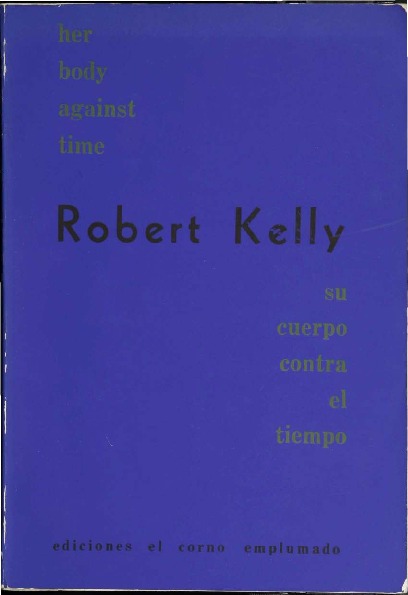

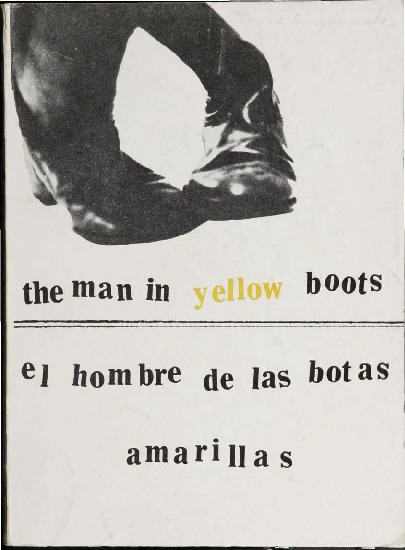
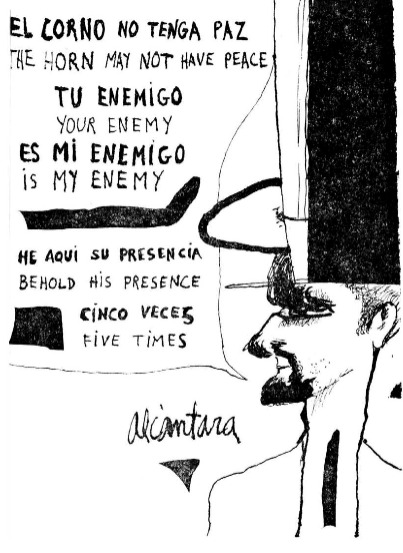
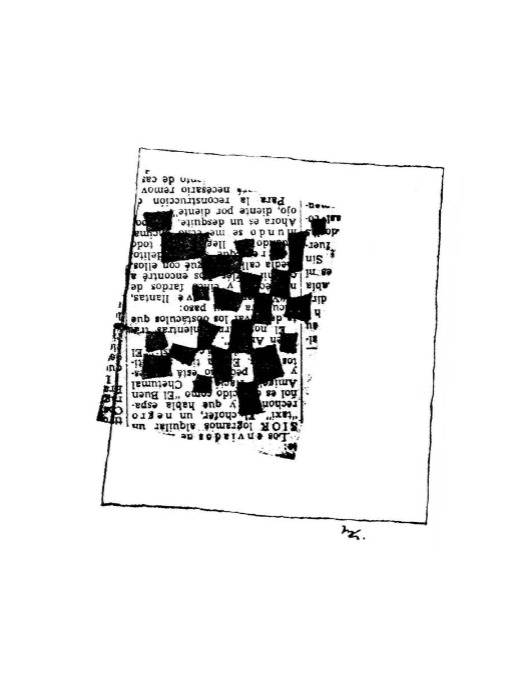
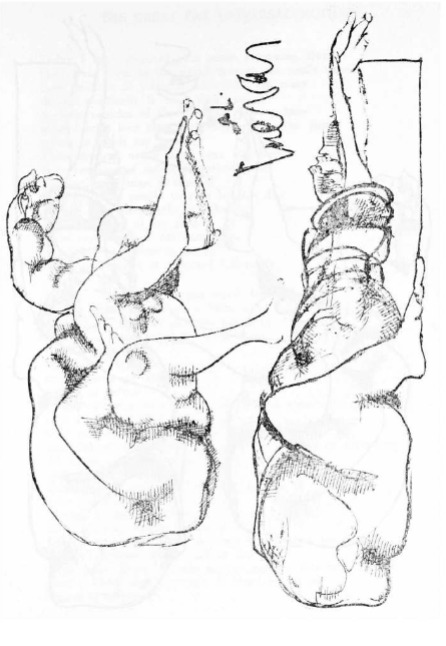
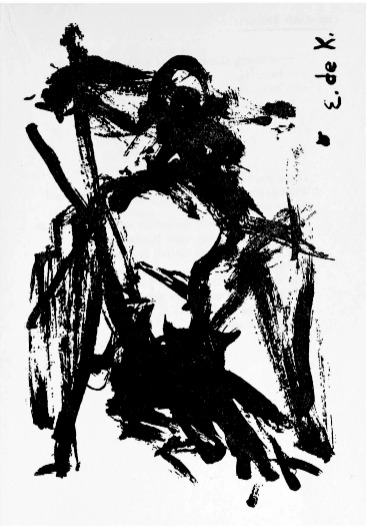

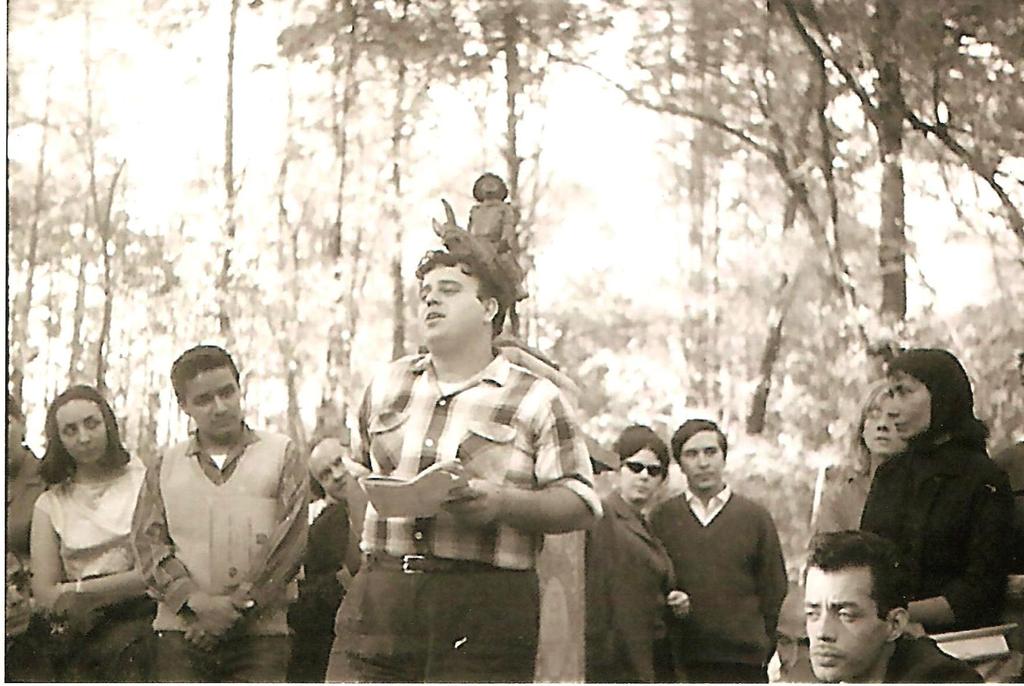
![Pájaro Cascabel 2 [Cover] Pájaro Cascabel 2 [Cover]](https://opendoor.northwestern.edu/archive/files/fullsize/9f6922d1551a81ef122d0e1fc6726be1.jpg)
![Pájaro Cascabel 5 [Cover] Pájaro Cascabel 5 [Cover]](https://opendoor.northwestern.edu/archive/files/fullsize/50eb6ce65ba18f15caf523626a793731.jpg)
![Eco contemporáneo 1 [Cover] Eco contemporáneo 1 [Cover]](https://opendoor.northwestern.edu/archive/files/fullsize/2f18af2de4f8bf3bdec5a649644f8d82.jpg)
![Eco contemporáneo 3 [Cover] Eco contemporáneo 3 [Cover]](https://opendoor.northwestern.edu/archive/files/fullsize/38e2932834bfe2d12b0552d0921c4c34.jpg)
![Eco contemporáneo 5 [Cover] Eco contemporáneo 5 [Cover]](https://opendoor.northwestern.edu/archive/files/fullsize/be01db10822515f7b3cf8b0211453588.jpg)
![Monks Pond [Cover] Monks Pond [Cover]](https://opendoor.northwestern.edu/archive/files/fullsize/3662cd05d5841dd5f48c03ca0d796f5b.jpg)
